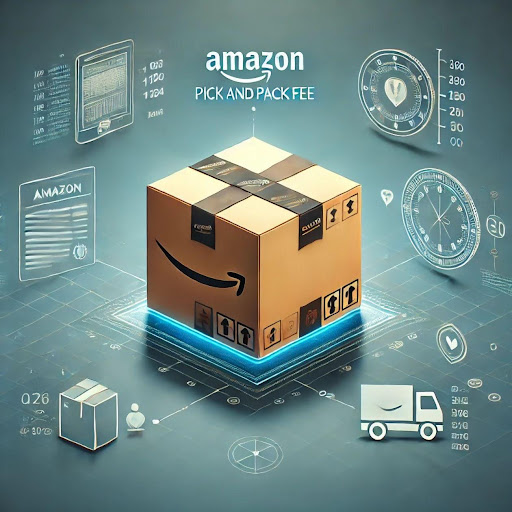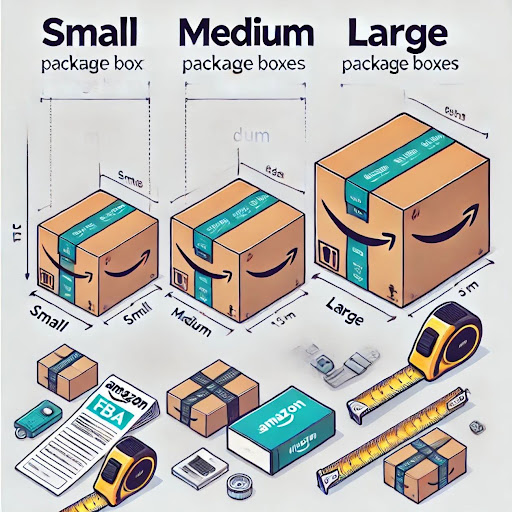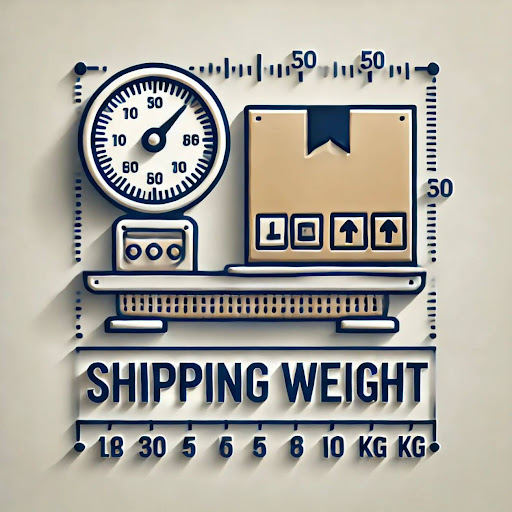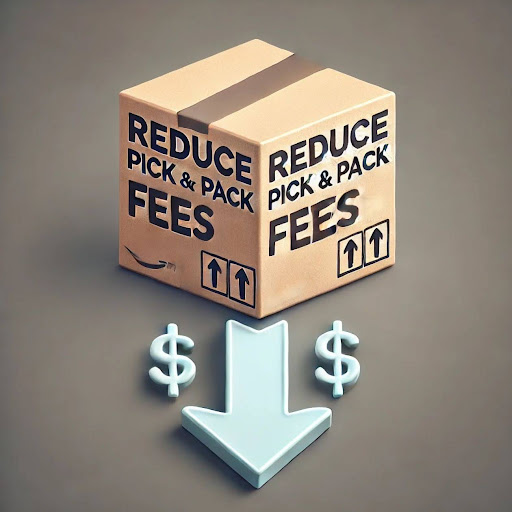FBA Pick and Pack Fee: What Every Amazon Seller Needs to Know in 2024

What is the Amazon Pick and Pack Fee?
The Amazon pick and pack fee applies to each unit shipped through the FBA program. It changes depending on several factors, such as product category, size, and weight. These fees are not passed on to your customers but are deducted from your sales proceeds, so it’s crucial to monitor them closely.
As an Amazon seller, you’re responsible for these charges every time an order ships, and they’re in addition to any monthly subscription fees you may have.
How to Calculate Amazon Pick and Pack Fees
Amazon determines the pick and pack fee based on four main criteria:
-
Product Size Tiers
-
Shipping Weight
-
Dimensional Weight
-
Fee Categories
Each of these factors influences the fee differently, and you may also face additional monthly fees based on your sales volume. Let’s dive into the details.
1. Product Size Tiers

Amazon calculates FBA pick and pack fees primarily based on the size of your product. The size tier depends on the product type, weight, and dimensions. Amazon uses inches and pounds if you're based in the U.S.
The size tiers are:
-
Small Standard Size
-
Large Standard Size
-
Small Oversize
-
Medium Oversize
-
Large Oversize
-
Special Oversize
For example, a large standard-size item must meet all of the following criteria when fully packaged:
-
Weigh less than or equal to 20 pounds
-
Have a longest side (length) of less than or equal to 18 inches
-
Median side (width) of less than or equal to 14 inches
-
Shortest side (height) of less than or equal to 8 inches
Amazon may charge different fees for standard-size items based on whether the item is classified as apparel or non-apparel.
2. Shipping Weight

Amazon determines FBA shipping costs based on the unit weight of your product. If your product weighs less than 1 pound, Amazon rounds up to the nearest ounce. If it weighs more than 1 pound, the weight is rounded up to the nearest pound.
For products larger than 150 lbs, Amazon uses unit weight only to calculate shipping fees. For other items, both dimensional and standard weights are used.
3. Dimensional Weight (DIM Weight)
Dimensional weight is crucial in determining FBA fees for bulkier items. You can calculate the dimensional weight by multiplying the product’s length, width, and height (in inches) and then dividing by 139 (Amazon’s DIM weight conversion factor).
Amazon will charge whichever is higher between the standard and DIM weight for shipping, so it’s important to understand how these two calculations impact your fulfillment costs.
Example:
If you have a box that measures 30 inches by 20 inches by 15 inches, the calculation would look like this:
30 x 20 x 15 = 9,000 cubic inches
9,000 ÷ 139 = 64.75 lbs (DIM Weight)
If the actual unit weight is 50 lbs, Amazon would use the DIM weight (64.75 lbs) to calculate your fees, as it’s higher than the standard weight.
4. Fee Categories
Amazon categorizes products into different fee categories, and this classification impacts your fulfillment fees. For instance, apparel and dangerous goods have unique categories and often higher fees. Understanding which category your product falls under is crucial to accurately estimating your fees. Here's how you can reduce it!
For instance, apparel products have separate rates from non-apparel items, and special handling fees may apply for products that fall under the "dangerous goods" category.
2024 Amazon Pick and Pack Fee Updates
In 2024, Amazon made significant updates to its pick and pack fee structure, particularly in the oversize categories. The large bulky size tier and extra-large size tier were introduced, replacing the old oversize categories.
-
Large Bulky:
If the greater of your unit or dimensional weight is less than or equal to 50 lbs, your item falls under this category. It must also meet the following dimensional limits:-
Longest side: ≤ 59 inches
-
Median side: ≤ 33 inches
-
Shortest side: ≤ 33 inches
-
Girth + length: ≤ 130 inches
-
-
Extra-Large:
Items exceeding the large bulky-size limit fall under the extra-large category and may require special handling and delivery options due to their size and weight.
Rate Cards and Fee Tables
Amazon publishes rate cards for FBA pick and pack fees. These cards break down fulfillment costs by product category and size tier, making it easier to estimate your shipping expenses.
For 2024, you’ll notice changes to the rate tables due to market conditions, so it’s vital to stay updated with Amazon’s latest fee structures. Regularly check for updates on fee changes to ensure you’re not blindsided by increased costs.
Multi-Channel Fulfillment (MCF) Fees
If you're using Multi-Channel Fulfillment (MCF), where Amazon ships orders from non-Amazon platforms, expect higher fees. In addition, there’s a 5% surcharge on fulfillment services if you choose to block Amazon Logistics from handling your orders.
This surcharge can significantly increase your overall fulfillment costs, so it’s essential to factor this into your pricing strategy if you use multiple sales channels.
Strategies to Reduce Pick and Pack Fees

Here are some strategies you can use to reduce your pick and pack fees:
-
Optimize Product Packaging
Reducing your packaging size and weight can push your product into a lower size tier, reducing fulfillment fees. -
Use the Small and Light Program
Enroll in Amazon’s Small and Light program if you sell small, lightweight products. This can significantly lower your fees. -
Monitor Your Product Dimensions
Regularly check that Amazon has the correct product dimensions in its system. Errors in measurements can result in inflated fees. -
Audit Your FBA Fees
Amazon may overcharge you for FBA services due to lost or damaged inventory. Regularly auditing your fees and claiming reimbursements can save you a significant amount of money over time.
Conclusion
The FBA pick and pack fee is an essential part of selling on Amazon, and it can make or break your profit margins if not optimized. Understanding how the fee is calculated and staying updated with the latest changes in Amazon’s fee structures will help you plan better and maintain profitability.
If you need personalized guidance or help fine-tuning your strategies, Superfuel AI can assist. Our AI-powered assistant analyzes 36+ key Amazon metrics to identify and address the root causes of sales fluctuations, helping you optimize your storefront and boost sales. Reach out to us at [email protected].
--
Ben Mathew, Amazon Expert
Ben Mathew is a co-founder at Superfuel, a sales assistant for Amazon sellers. In the past, Ben and his team of e-commerce specialists and software engineers have launched 40+ new brands on Amazon, taking them from zero to bestsellers. In his free time, he is either learning from other top sellers or encouraging his 3 daughters in their love for reading. He is reachable at ben [at] superfuel.io.
FAQs
What is the Amazon pick and pack fee?
The Amazon pick and pack fee, also known as the fulfillment fee, is a per-unit charge for sellers using the Fulfillment by Amazon (FBA) program. It covers the costs associated with picking, packing, and shipping your products to customers.
What are the 2024 updates to the pick and pack fees?
In 2024, Amazon introduced new size tiers, including Large Bulky and Extra-Large categories, replacing the old oversize tiers. These changes affect how fees are calculated, so it's important to review the latest rate cards.
What is dimensional weight and why does it matter?
Dimensional weight (DIM weight) accounts for the package's size in addition to its weight. It's calculated by multiplying the product's dimensions and dividing by 139. Amazon uses the higher of the actual weight or DIM weight to calculate shipping fees.
What is Multi-Channel Fulfillment (MCF) and how does it affect fees?
MCF allows you to fulfill orders from other platforms using Amazon's fulfillment network. MCF fees are higher than standard FBA fees, and a 5% surcharge applies if you block Amazon Logistics from handling your orders.
Are there additional fees for certain product categories?
Yes, products classified under categories like apparel or dangerous goods may incur higher fees due to special handling requirements.
Why is monitoring product dimensions important?
Incorrect product dimensions can lead to inflated fees, affecting your profit margins. Regularly verify that Amazon has accurate information for your products.
What happens if Amazon overcharges me on FBA fees?
You can file for reimbursements through Amazon Seller Central if you identify overcharges due to incorrect fees, lost, or damaged inventory.
How do I stay updated on fee changes and policies?
Regularly check Amazon's official communications, such as updates in Seller Central, and review the latest fee structures and policies.